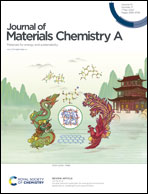Thin film transition metal dichalcogenide photoelectrodes for solar hydrogen evolution: a review
Abstract
Transition metal dichalcogenides (TMD: MoS2, MoSe2, WS2, WSe2) attracted much attention during the last few decades as 2D-layered nanoparticles and thin films for renewable energy applications. TMDs are not widely studied as thin film photoelectrodes for photoelectrochemical (PEC) water splitting, even though they have demonstrated an excellent performance in photonics and optoelectronics (as photodetectors and field-effect transistors), which is related to their specific intrinsic structural, mechanical, optical and electronic properties. In this review, we focus on WSe2, one of the most promising compounds among TMDs. The emergence, development and performance of WSe2, especially, in the form of 2D layers and thin film photoelectrodes, the role of passivation, co-catalysts and plasmonic structures for the solar hydrogen evolution reaction are discussed and compared to those of other TMDs and other photoelectrode materials. Practical efficiency limits for PEC hydrogen evolution for TMDs with respect to theoretical limits are discussed. The advantages and disadvantages of TMDs are assessed based on intrinsic and extrinsic reasons. Strategies that could advance the performance of TMDs for PEC hydrogen generation are proposed.



 Please wait while we load your content...
Please wait while we load your content...